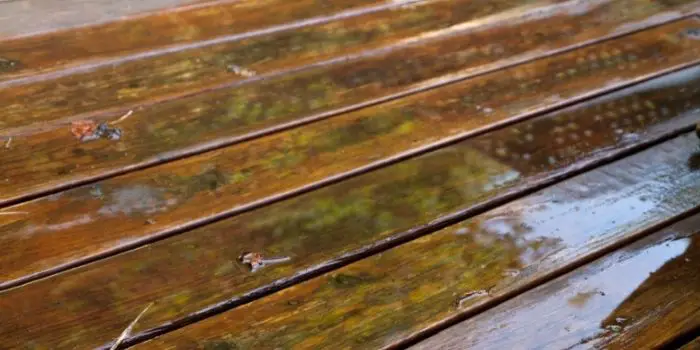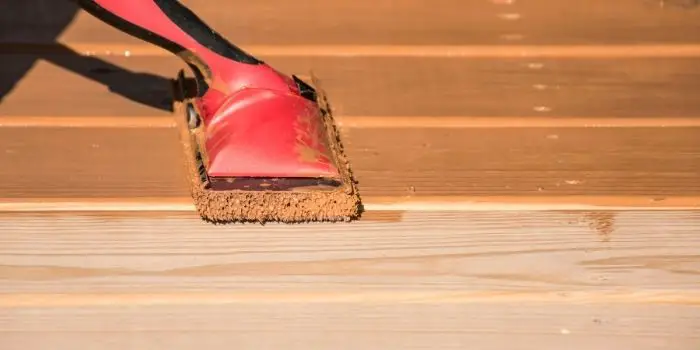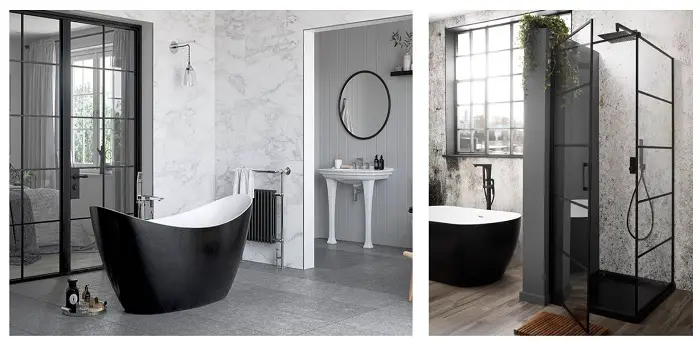
It’s springtime, and your deck needs a little love. You’re planning to stain or paint it, but you notice there are gaps between some of the boards. You’re not sure how to fill them in without making a mess, but you want to get the job done quickly so you can enjoy your deck all season long.
Well, small gaps between deck boards can be a headache to fill properly, but with the right tools and techniques, it can be a quick and easy job.
I did this last summer and used the toolset that included a pump sprayer, moldable sponge brush, and bristle paintbrush. They all worked like a charm and helped me in painting cracks and small gaps between deck boards.
In this blog post, I’ll share some of the fastest ways to paint or stain between deck boards so you can get your project finished quickly and without any fuss.
What's Here in the Article:
Painting Between Floorboards on a Deck
When it comes to painting over old deck paint, covering the surface with a roller or paintbrush is one thing, but ensuring thorough coverage between the grooves is another challenge altogether.
Leaving these gaps unpainted can leave your project looking incomplete. Given the narrow and tight spaces between deck boards, here are some steps to follow to ensure you paint between them effectively…
Step 1: Protect the Area
Cover nearby plants with plastic and tape it under the deck. Remove furniture and fill cracks with wood filler. After it cures, flatten protruding nails for a smooth surface.
Step 2: Clean Up
Sweep away debris on your decking area and scrub with soapy water. Rinse thoroughly and let dry overnight. For painted decks, soften paint with mineral spirits, scrape off, and clean between boards.
Step 3: Get Ready to Paint
Stir the paint well to ensure a smooth consistency. Pour it into a paint tray for easy access.
If you want to use a pump sprayer, mix paint with thinner and fill the sprayer canister, leaving space for pressure buildup. Next, hold the nozzle six inches from the surface, pump to build pressure, then spray an even coat onto the deck.
A moldable sponge is another great way to paint because you can fold or mold your sponge to fit between deckboards. Then dip in paint, remove excess, and drag the sponge along the cracks for even coverage.
If you plan to use a crack and groove brush, dip the brush into the paint tray, removing excess paint. Then run the brush between deck boards in a back-and-forth motion for even coverage.
It’s important to keep in mind that the space between deck boards typically measures around 1/8 inch wide. Therefore, selecting a tool that is equally slim or moldable is essential for effective application. When choosing a brush size for your project, ensure it can fit into these narrow spaces without jamming to prevent any potential damage.
How to Stain Between Deck Boards and Small Gaps?
Deck paint typically offers greater longevity compared to deck stain. However, staining a new deck is a cost-effective and time-efficient alternative to painting.
When it comes to staining between deck boards, utilizing a moldable sponge or scouring pad is the optimal approach. Start by saturating the applicator with deck stain, then maneuver it between the deck boards to rub the stain into the wood.
It’s crucial to ensure that the wood is dry and clean prior to staining to prevent the trapping of dirt and contaminants, which could result in unsightly streaks. Begin by sanding the deck boards to rough the surface and remove any old paint or stain. Then for an impeccable finish, consider applying two coats of deck stain.
Use a putty knife or other tool to scrape away any excess stain dripping from the gap. Allow the stain to dry completely before walking on the deck or placing any furniture on it.

How Do You Clean and Caulk Between the Deck Boards?
If your deck is showing signs of wear and tear, it’s probably due for a thorough cleaning and refinishing. However, before you start spraying it down with a hose, there are some important considerations to keep in mind regarding cleaning between deck boards and small gaps.
First, it’s important to choose the right cleaner. A pressure washer can be too powerful and damage the wood, so opt for a milder solution like soapy water or a deck cleaner designed specifically for the job.
Once you’ve determined the best cleaner to use, start by removing any loose debris from between the boards, then wet the area and apply the cleaner of your choice. Let it sit for a few minutes then scrub with a brush or broom. Finally, rinse away the cleaner and let the deck dry completely.
Once you have cleaned the deckboards nicely, check for the gaps and spaces between them. These are often felt when you step and walk on a deck. These gaps can be highly uncomfortable, and be dangerous if you are not careful while walking.
Caulking between deck boards is a great way to improve the comfort of your deck and prevent accidents. Caulk is a filler material that is used to fill in gaps and cracks. It can be purchased at most hardware stores and is relatively easy to apply.
Simply apply the caulk to the gap between the boards, and then use a putty knife to spread it evenly. Once the caulking has dried, you can paint over it to refinish it; you will have a much more comfortable deck that is safe for everyone to enjoy.
Share the post "Fastest Ways to Paint or Stain Between Deck Boards (Filling Small Gaps)"

Douglas Becker (aka Painter Doug) has over twenty years of experience as a painter in Adkins, Texas. At present, he resides in Florida with his family.
From painting multi-storeyed houses, condos, and apartments to large commercial buildings and small offices, he had served various customers in areas not only in Adkins but also in Southwest Florida, Sarasota, Naples, and many more. To know more about him check here.




